Pepsi (History, Marketing, Variations & Commercials)
Pepsi is a globally recognized beverage that is one of the most consumed soft drinks in the world. When Caleb Bradham developed Pepsi 119 years ago, he couldn’t imagine how big it would become.
Here is the story of Pepsi and how the drink’s popularity turned a small company into a global corporation. Detailing how the drink was developed and how it got the status that it holds today.
Please leave a review or any memories of this snack in the comments at the bottom of this page. Thank you!
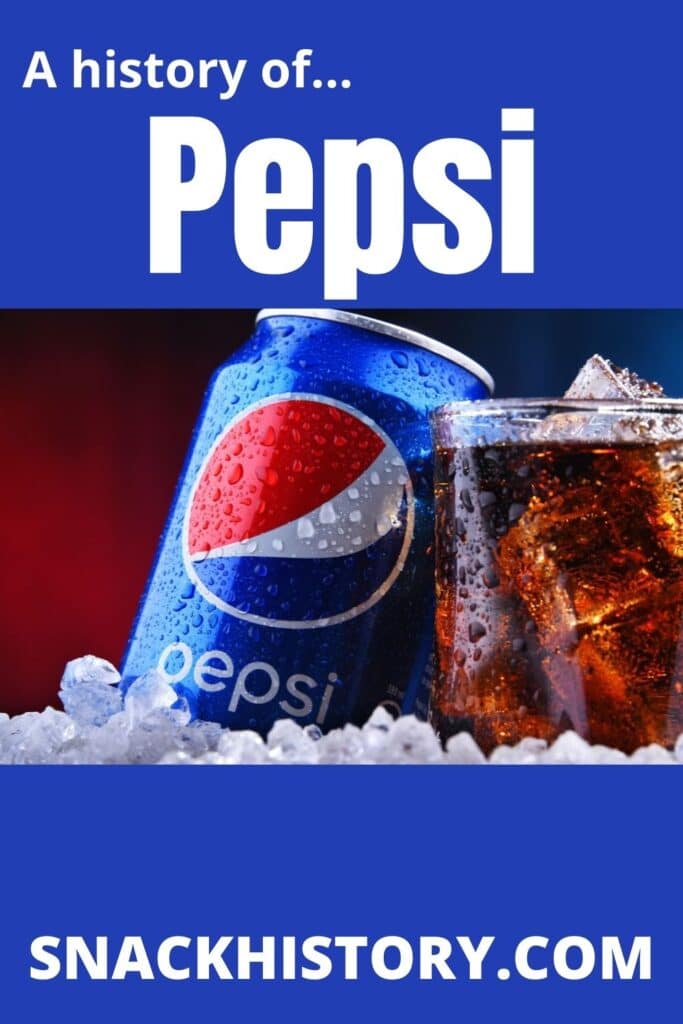
The creation of Pepsi
In 1893, a North Carolina pharmacist named Caleb Bradham began developing the drink. Bradham saw that the popularity of Coca-Cola was spreading and wanted to make his own cola beverage.
Then just like with Coca-Cola’s advertising, Caleb advertised the drink to treat various ailments. Particularly indigestion and upset stomachs.
The original name for the drink was also called “Brad’s Drink” after Bradham’s last name. He would soon change the name to Pepsi-Cola in 1898, because he advertised it to treat dyspepsia.
Pepsi-Cola had a similar formula to Coca-Cola with a few differences. One of the biggest differences being that the original Pepsi formula included vanilla flavoring.
Bradham opens the first Pepsi-Cola warehouse
Five years after naming his drink Pepsi-Cola, the beverage had gotten rather popular in the southern US. So much so that Bradham couldn’t bottle the amount needed at his drugstore to meet the demand.
This led Bradham to rent a building and open the first Pepsi-Cola bottling warehouse in New Bern, North Carolina.
In the first year of production at the warehouse over 7,968 gallons of Pepsi syrup were bottled. The second year would almost triple that number with 19,848 gallons of syrup bottled and sold.
During the early 1900s, Pepsi would continue to gain popularity and would get its first celebrity endorsement in 1909. Barney Oldfield, a pioneer automobile racer, started to endorse the drink.
The advertisement that he used to sponsor the drink described Pepsi as “delicious and healthful.” A slogan that Bradhamn would use for Pepsi until the 1920s.
Pepsi falls on hard times
After World War 1, the Pepsi-Cola company began to struggle financially. Fluctuating prices of sugar were the main cause of Pepsi’s struggles this time, which forced Bradham to file for bankruptcy.
At first, Coca-Cola made multiple offers to buy Pepsi-Cola, but Bradham refused to sell to them. He was then forced to sell his assets and a businessman named Roy C. Mergargel bought the Pepsi trademark from Bradham.
Mergargel attempted to revive Pepsi, but was unsuccessful in his efforts. Coca-Cola also attempted to make Mergargel an offer to buy Pepsi, but he also refused to sell.
Charles Guth buys Pepsi
Roy Mergargel would end up selling Pepsi to Charles Guth, who was president of Loft, Inc. A candy manufacturer that had retail stores throughout the US during the 1920s.
The reason that Guth bought Pepsi was because he wanted to replace Coca-Cola in his store’s fountains. Coca-Cola refused to give him a discount on syrup, which led Ruth to buy his own cola beverage.
Guth would get his chemist to come up with a new formula for Pepsi to improve on the taste.
Pepsi’s popularity during the Great Depression
Pepsi began to be revived during the height of the Great Depression in the United States. This was due to Guth deciding to bottle Pepsi in 12 oz bottles rather than the normal 6.5 oz.
Selling the 12 oz at .05 cents a bottle, which was the same price he sold the 6.5 oz bottles. Guth would also put a lot of money into advertising and a popular radio ad for Pepsi was made.
The jingle called “Nickel, Nickel” was created by a popular Jazz trio called the Tune Twisters. “Pepsi Cola hits the spot/Twelve Full Ounces, that’s a lot/Twice as much as a nickel, too/ Pepsi-Cola is the drink for you!”
Having a 12 ounce drink that you could buy for a nickel during the depression was a deal many couldn’t pass up.
This would lead to the rebirth of Pepsi-Cola as profits would double every year from 1936 to 1938.
The legal battle
Even though Pepsi had been revived by Guth in the mid 1930s, Loft, Inc was struggling. Since Guth had used Loft, Inc finances and facilities to create Pepsi, the board of Loft, Inc took him to court.
They felt that since Pepsi was made in their money and created in their facilities, that they were the legal owners.
Guth and Loft, Inc would battle in court over the next few years. The case would even go to the Delaware Supreme Court.
Eventually Loft, Inc would win the case and Guth would lose his ownership of Pepsi.
Pepsi advertises to black americans
Walter Mack was named the new president of Pepsi after they won the legal battle against Ruth. Mack would be the active president during the 1940s and do many ad campaigns targeting the African American communities.
He was a progessive thinker for the time and realized that advertising to African Americans could be very lucrative. Not just using stereotypical ads like many companies used, but respectful ads.
Treating black communities with respect in their ads, which would lead to them being loyal to Pepsi. Mack would even hire all black sales teams to go to areas where Jim Crow laws were in effect.
This led to many prominent black musicians like Duke Ellington to promote the drink. Nearly the entire African American population during the 1940s preferred Pepsi to Coke.
Unfortunately for Mack, the board at Pepsi did not share his progressive views. They feared over advertising to black communities would lead white communities to stop buying Pepsi.
Mack was removed as president of Pepsi at the end of 1949. The black communities would also stop supporting the brand during this time.
Loft, Inc. becomes the Pepsi-Cola Company
After winning their lawsuit against Charles Guth, Loft, Inc. took full control over Pepsi-Cola. The next thing Loft, Inc would do was change the name of their company.
They would change the name of the company to the Pepsi-Cola Company. This was due to the drink having more brand recognition than their original name,
The focus of the company also switched to just Pepsi-Cola and just about all the candies they made were discontinued.
Alfred N. Steele becomes president of Pepsi
In 1950, the Pepsi-Cola Company would name a new company president in Alfred N. Steele. Alfred Steele was the former vice-president at the Coca-Cola Company and played a big part in their early advertising.
To take Pepsi to the next level, Steele knew that they would need huge marketing and advertising campaigns. Doing way more than the company ever had previously.
Pepsi would be advertised everywhere from billboards, cinemas, radio, and early television commercials. One of the more known ads during this time was their “Hits The Spot” jingle sung by actress Polly Bergen.
Joan Crawford, who would actually become Alfred Steele’s wife, would even do commercials for them in the 1950s.
These aggressive advertising campaigns would pay off and Pepsi-Cola became over 11 times more valuable.
Joan Crawford become active president of Pepsi
Alfred N. Steele would pass away in 1959 and his widow, actress Joan Crawford became active director of the company. She would hold this title from the end of 1959 to 1965 after the company was sold.
Pepsi merger with Frito-Lay Inc
In 1965, the Pepsi-Cola Company would merge with Frito-Lay Inc. A large business that sold a variety of snack foods from Fritos, Doritos, and Rold’s Gold Pretzels.
This merger would take Pepsi-Cola international and make record profits.
The Pepsi Challenge
Since Pepsi-Cola was created, the drink’s biggest rival was Coca-Cola. For the entirety of their history up until 1970, Coca-Cola outperformed Pepsi in every aspect of business.
Pepsi would take their rivalry to the next level in the 1970s, when they began doing “The Pepsi Challenge.” A blind taste test in numerous stores to decide which drink was better.
They began advertising that Pepsi-Cola was routinely beating Coca-Cola in these blind taste tests. Leading to Pepsi’s profits increasing significantly during this time.
Through the 1970s and 1980s, Pepsi-Cola actually started to get the better of Coca-Cola. These losses would lead to Coca-Cola trying something new to increase their profits.
They would release a new formula called “New Coke” which was an absolute disaster. Leading to Pepsi making even more money during this period.
Marketing from the 1970s-1990s
Much of Pepsi’s success started in 1973, when they changed the logo of the cans and bottles. Changing to the patented red, white, and blue bottles that were heavily advertised and well received.
Pepsi also had some of their biggest successes during this time. Getting numerous starts to promote the drink and being featured in blockbuster films like the Back To The Future trilogy.
They were even able to get the king of pop Michael Jackson to do numerous ads for them during the 1980s.
Frito-Lay begins buying restaurants
One thing that helped Pepsi-Cola grow its reach was Frito-Lay buying chain restaurants. Particularly three restaurants: Pizza Hut in 1977, Taco Bell in 1978, and Kentucky Fried Chicken in 1986.
The purchase of these three large chain restaurants would lead to them exclusively selling Pepsi and other Pepsi-Cola drinks.
Pepsi acquires a navy
In 1989, the Pepsi-Cola Company reached a deal to sell their drink within the Soviet Union. In an early agreement between the two sides, the Soviet Union gave Pepsi old naval ships in exchange for Pepsi.
Pepsi received: 17 submarines, a cruiser, a frigate, and a Soviet destroyer.
An internet legend that was born from this deal states that Pepsi would become the world’s 5th most powerful Navy. In reality, they were actually tied for 7th with India and many of the ships they were given were not seaworthy.
The motivation for Pepsi doing this deal was to open up the country for trade and sell Pepsi products there. Pepsi actually had the support of the US government in hopes that the influence of Capitalism would alter the country.
Variations of Pepsi-Cola
Since the original Pepsi-Cola was created in 1893, there have been numerous variations of the drink. Here are some of the most notable flavors of Pepsi-Cola.
Pepsi-Cola
The original Pepsi-Cola developed in 1893 and is the flagship soft drink of the company. It is still one of the most bought soft drinks in the world right under Coca-Cola.
Diet Pepsi
Diet Pepsi was introduced in 1964. It was actually the first US cola advertised as having zero calories and zero sugar. This diet drink would be replicated by all other soft drink makers after its debut.
Pepsi Wild Cherry
In the late 1980s, Pepsi-Cola bought the soft drink company that made the fruit flavored beverages called Slice. Pepsi wanted to replace the Cherry Slice and mix it with Pepsi-Cola.
What they created would be called Pepsi Wild Cherry that debuted in 1988 and is still a top seller for Pepsi.
Pepsi Twist
An early version of the Pepsi Twist was actually attempted in the 1960s as a diet lemon lime Pepsi. Forty years later in 2006, Pepsi introduced the Pepsi Twist, which is Pepsi with lemon and lime added. Since then, the Pepsi Twist has been available internationally and at all restaurants that serve Pepsi drinks.
Pepsi Max
Pepsi Max was introduced in 1993 as a cola with no sugar or calories. It was later renamed to Pepsi Zero Sugar in 2016.
Pepsi Blue
A blue variety of Pepsi released as Pepsi Blue and called Pepsi Pinas in the Phillipines.
Crystal Pepsi
Crystal Pepsi has a crazy story behind why it wasn’t successful. It is a clear cola that was introduced in the early 1990s.
Coca-Cola would sabotage the release of Pepsi’s new products and promote that they were releasing a Diet Tab. People assumed Pepsi Clear was tab flavored diet drink to compete with Coke, which it wasn’t.
The drink would only be on the market from 1992-1994 in the US. Although throughout the world it has developed a cult following of fans.
This cult following led Pepsi to do many releases through the 2010s.
Logo
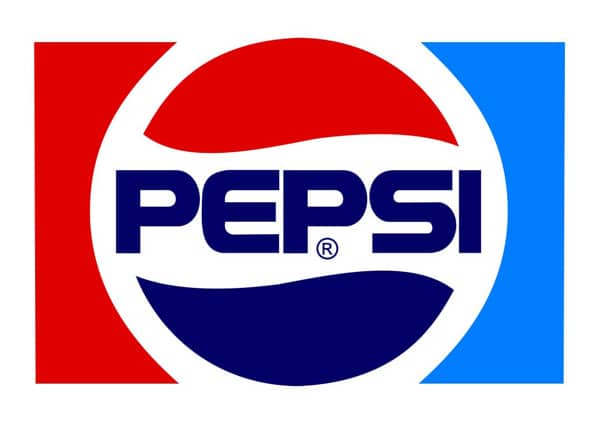
Buy Online

Ingredients
- Carbonated Water
- Sugar
- Colour (Caramel E150d)
- Acid (Phosphoric Acid)
- Flavourings (including Caffeine)
Nutrition
| Serving Size: | 1 can (357g) | % Daily Value* |
| Amount Per Serving | ||
| Calories from Fat | 0 | |
| Calories | 150 | |
| Total Fat | 0g | 0% |
| Sodium | 30mg | 1% |
| Total Carbohydrates | 41g | 14% |
| Sugars | 41g | |
| Protein | 0g | |
| Vitamin A | 0% | |
| Vitamin C | 0% | |
| Calcium | 0% | |
| Iron | 0% |
- Percent Daily Values are based on a 2000 calorie diet.
The popularity today
Pepsi continues to to be one of the last sold soft drinks in the world. In some parts of the world, they even surpass Coca-Cola in popularity.
It is available in just about every continent and hundreds of countries. Enjoyed by hundreds of millions of people across the world daily and is showing no signs of slowing down.
Pictures
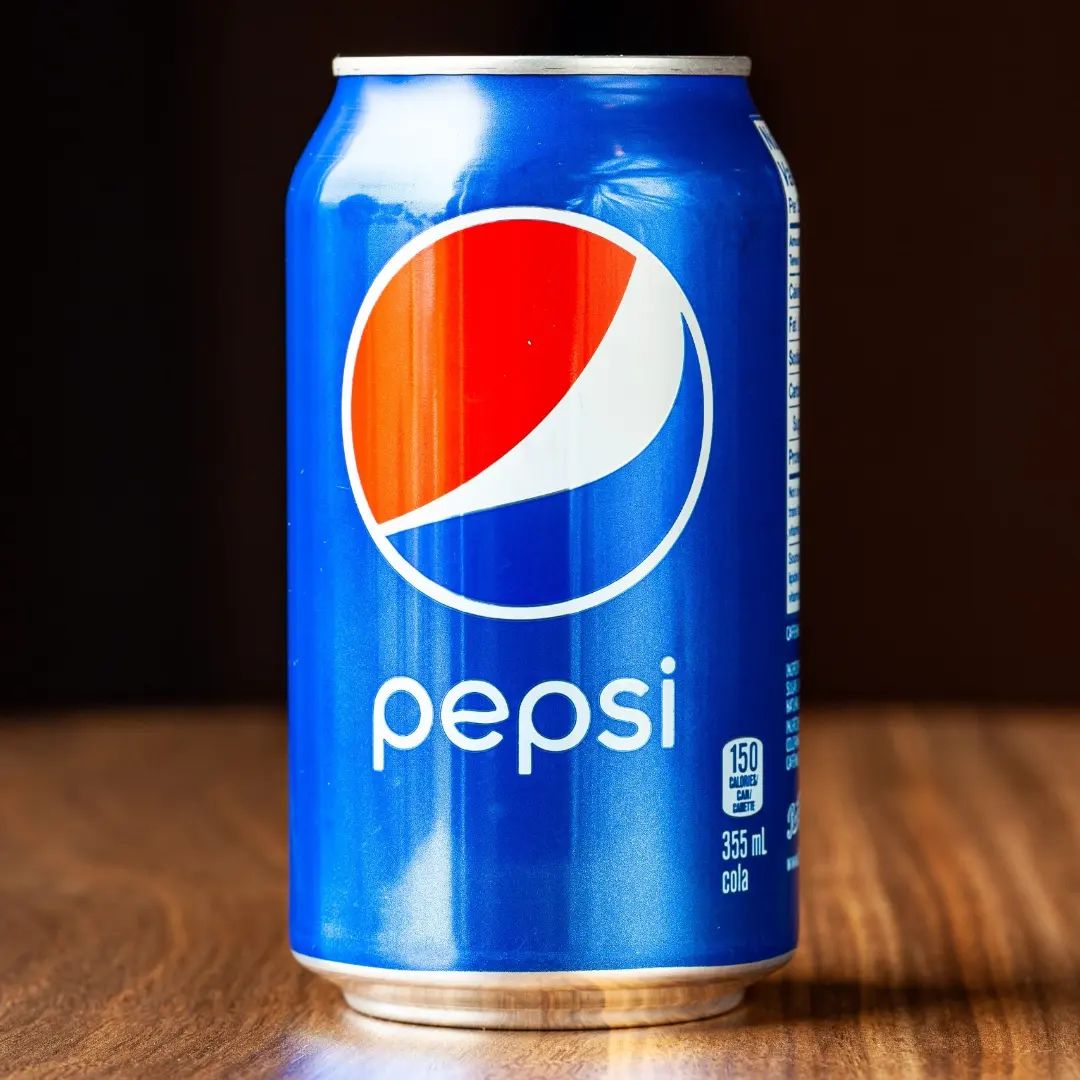
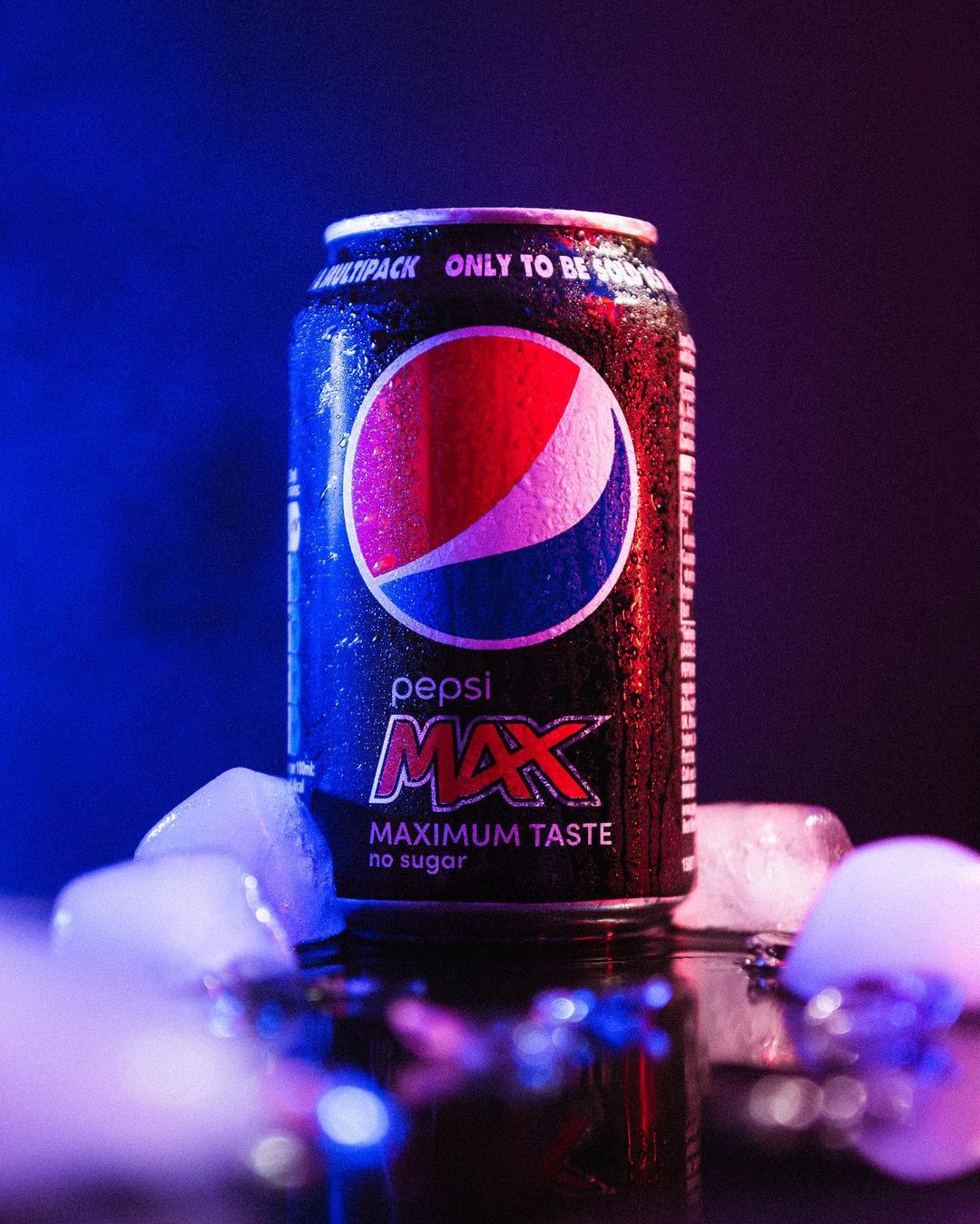
Commercials
FAQ
Who owns Pepsi?
Pepsi is owned by the PepsiCo company.
Where was Pepsi invented?
Pepsi-Cola was invented by Caleb D. Bradham, a pharmacist in New Bern, North Carolina.
When was Pepsi invented?
In 1893, a North Carolina pharmacist named Caleb Bradham began developing the drink. Bradham saw that the popularity of Coca-Cola was spreading and wanted to make his own cola beverage.
What does Pepsi own?
Where did Pepsi originate?
The roots of Pepsi originate from New Bern, North Carolina.
How much sugar in a can of Pepsi?
There are 41 grams of sugar in 1 can of Pepsi.
What is the difference between Diet Pepsi and Pepsi Zero?
Pepsi Zero Sugar contains 69 milligrams of caffeine per 355ml (12 fl oz), versus 36 milligrams in Diet Pepsi.
How many calories in Diet Pepsi?
There are 0 calories in Diet Pepsi.

My name is Brianna and I love writing on all topics. Candy history fascinates me and I am passionate about sharing my love of this topic with everyone else!
Please leave a review or any memories of this snack in the comments below. Thank you!
Click here for a full A-Z list of Snacks and Candy
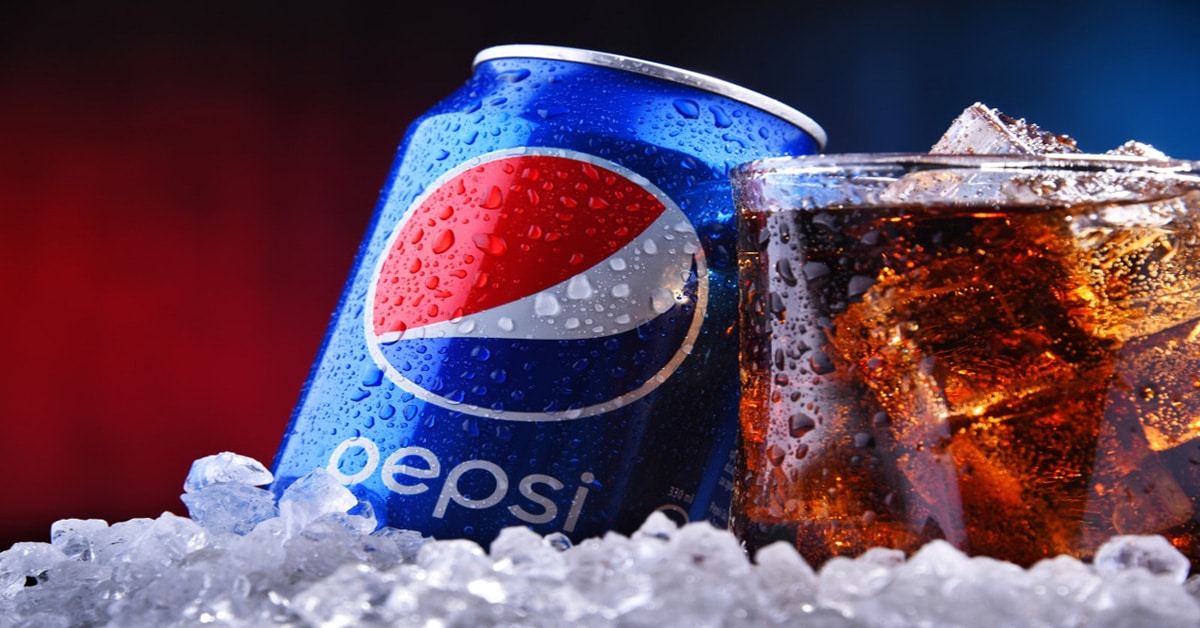
I I have but one habit in my life Pepsi. Love it love it will drink nothing else. Where is the clear Pepsi it is wonderful. I will never drink anything else thank you thank you thank you
Thanks for your comment Brenda! You can find an article on Crystal Pepsi (Clear Pepsi) here : https://www.snackhistory.com/crystal-pepsi/
hi! I love reading this. It helps a lot with my report for the class about history of Pepsi. Any article recommendation for the history of its advertisment?
I’m writing a paper on Pepsico; this was very helpful and interesting. What date did you write this, and can you share some of your references?
Tania Williams
I joined St. Louis Pepsi-Cola in 1959. It was a great company and had the privilege to work during the intro of Diet Pepsi, Mountain Dew. Before Diet Pepsi, they had Patio Diet. Great times.